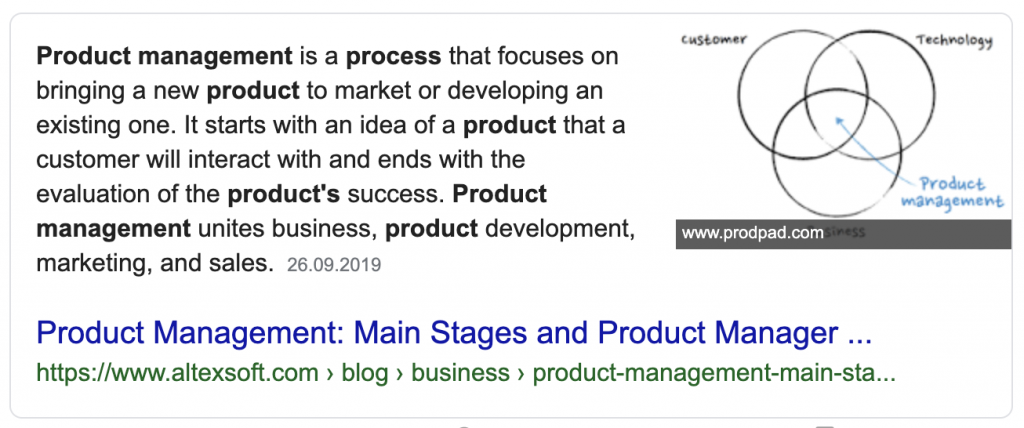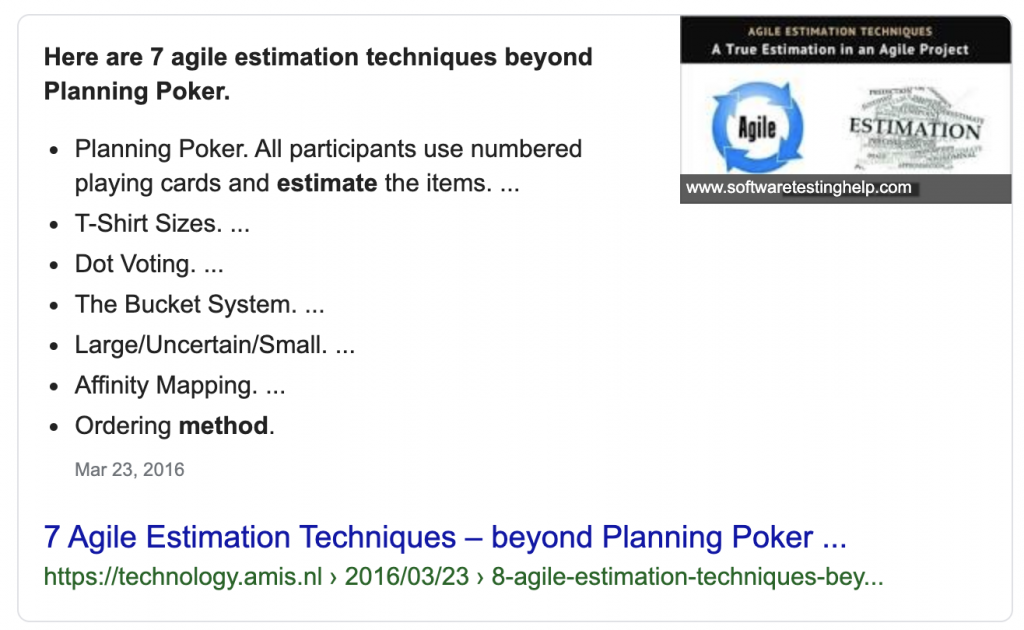(Not) Learning by Googling
If you don’t know something today, you google it. That’s great for a lot of things, for example if one of your biggest concerns is settling dinner-table arguments around “Who played X in the movie Y again?” or “When exactly did Z happen?”. Googling has become such a knee-jerk reaction to any question for my generation (90s) and the ones after us – but it’s not always helpful.
When I entered the workforce at age 26, I joined a new company as one of their first full-time hires. It was four co-founders, me, a programmer and a few interns. None of us had any real work experience. So when you’re dealing with nuanced topics like Product Management, Strategy or Marketing, let me show you what a 26-year-old who’s just getting started in any of these roles, on a team with no experience to guide him, would learn by googling.
OK, Google, show me results for “Product Management Process”
The first thing that shows up for me when I search for “Product Management Process”, for example, is this article by altexsoft.com.

The summary that Google pulls out of the article is already a highlight. But buckle up for the article itself. The first sentence literally reads:
“What do you need to create a product? First, an idea of how it will look in the end.”
Remembering myself at the beginning of my career, that’s about as far as I would’ve read into the article before calling everyone into a room to come up with an idea of what the product should look in the end.
Ok, Google, tell me more about “Development Team Structure”
So, now that we know how we’ll create our new product and are laden with a bunch of great ideas, we need a development team and some way to structure it. Gladly, the people at stormotion.io are the first ones to lend a (organic) hand:

Would it surprise you to learn that the article mentions “how a Scrum team looks in general?” There are a lot of good pointers and overall, the article poses more questions to think about than prescriptive how-tos. And that’s a good thing. But still: My 26-year-old self has now read “Scrum” and vaguely remembers hearing this phrase before. So off I go!
Ok, Google, remind me: “What is Scrum?”
By now, I feel like I’m getting close to speaking the Lingo of the people building the future. How great will it feel to be able to tell people casually: “Sure, we’re using Scrum to creatively deliver products of the highest possible value”? F*cking great!

So now we’re putting all those great ideas from step 1 into backlogs, I’m trying to get budget to become a certified Scrum Master and we’re rustling along in 2-week-sprints with no end in sight. But damn, we’re agile. Who cares if features that we estimated to take 3 sprints ended up taking 5? It must be our technique to come up with estimations. So instead of Planning Poker, let’s try these 7 other techniques. Surely one of them will help us fix things.

That’s not how exactly how it happened 3 years ago. But it comes pretty darn close. The outcome surely was the same.
Now, by the way, we’re following Shape Up, a framework for building software products by Basecamp. And we’re starting any project by first trying to understand our customers’ problems as much as possible.
